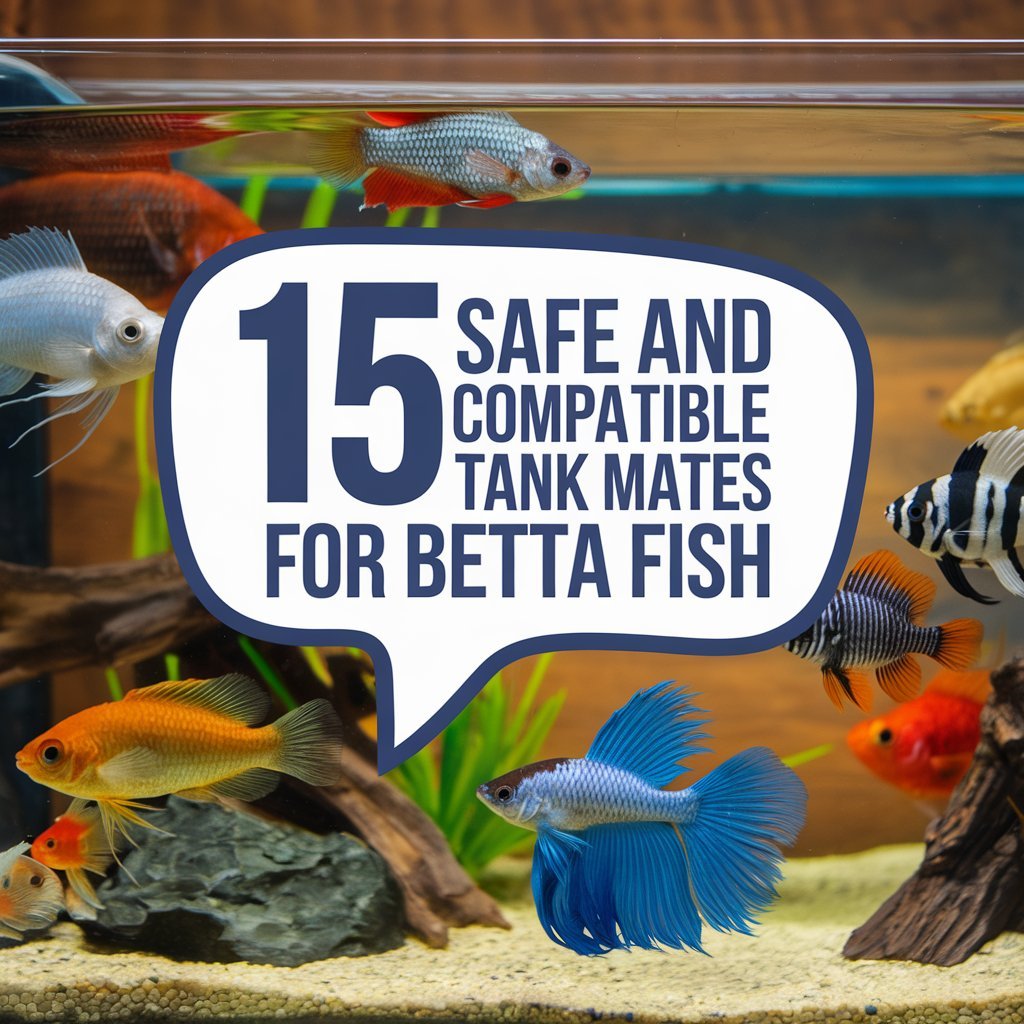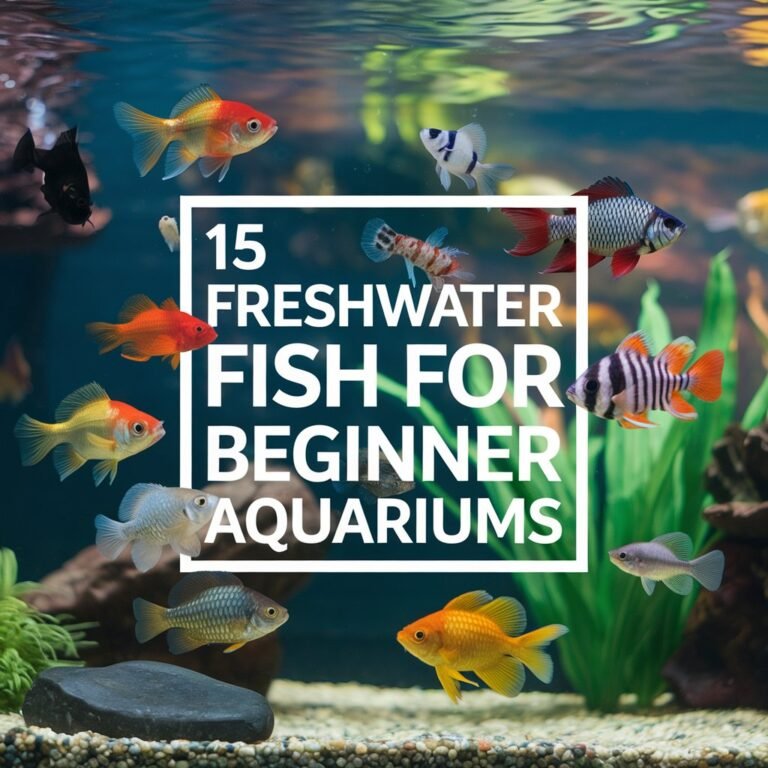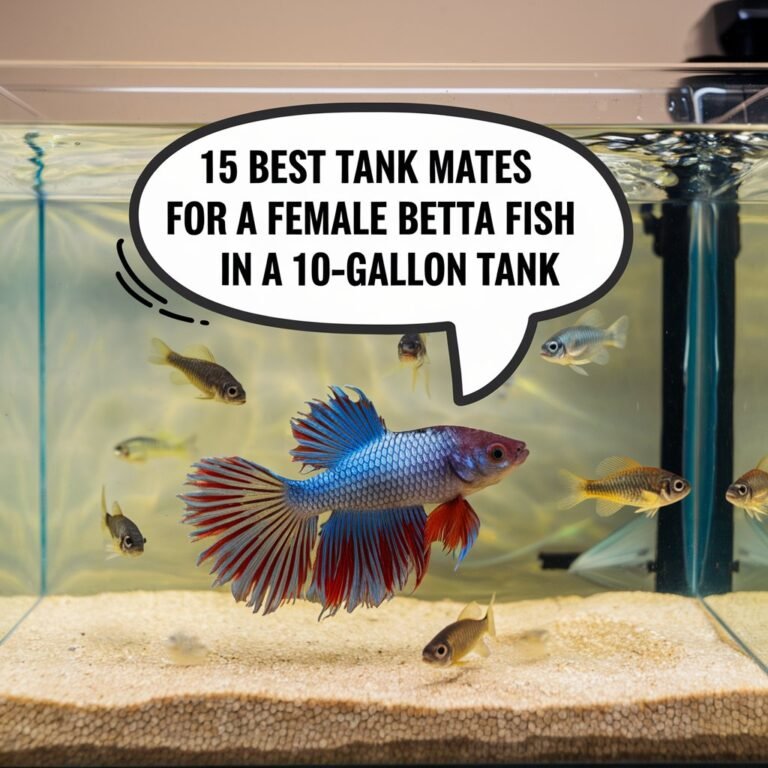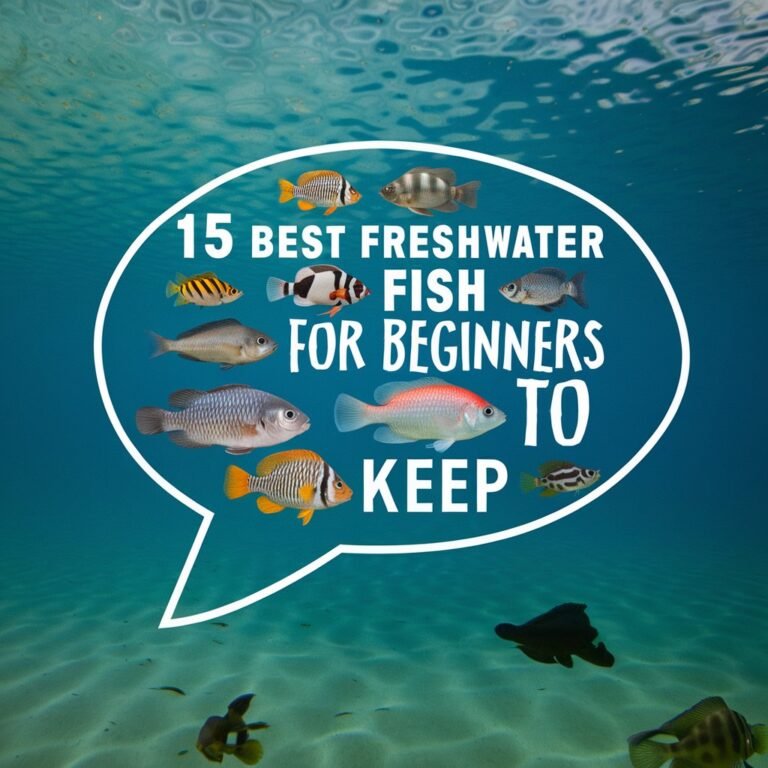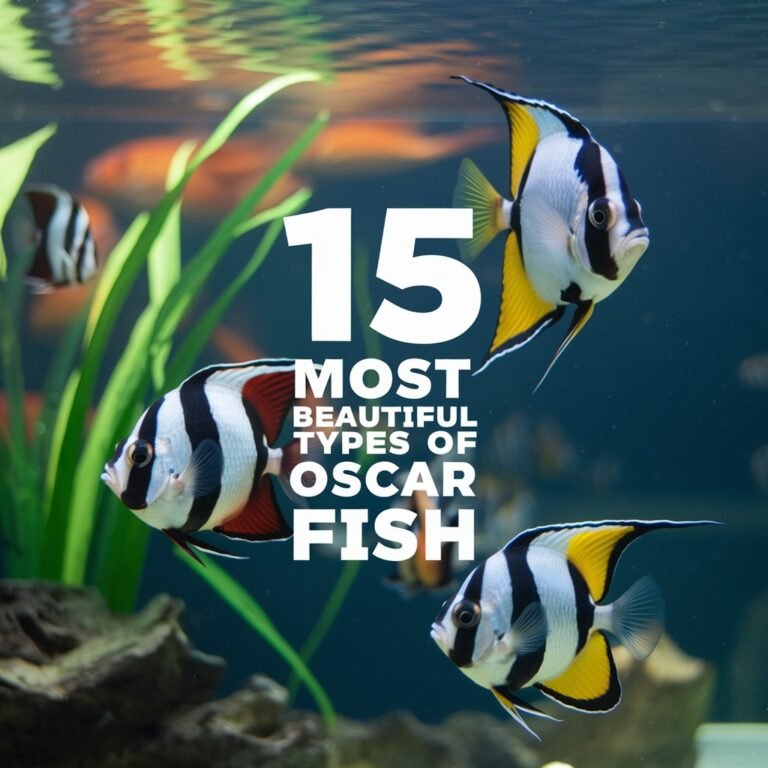15 Safe and Compatible Tank Mates for Betta Fish
When it comes to choosing tank mates for your Betta fish, you’re likely looking for species that will coexist peacefully and add visual interest to your aquarium. You’ve probably heard that some fish can thrive alongside Bettas, but which ones are the safest and most compatible?
You might be surprised to learn that certain schooling fish, like Neon Tetras and Harlequin Rasboras, can actually help distract from your Betta’s territorial behavior. But what other tank mates can you introduce to create a harmonious and engaging environment? There are 15 species of fish that can help you achieve this – but can you guess which ones?
In A Nutshell
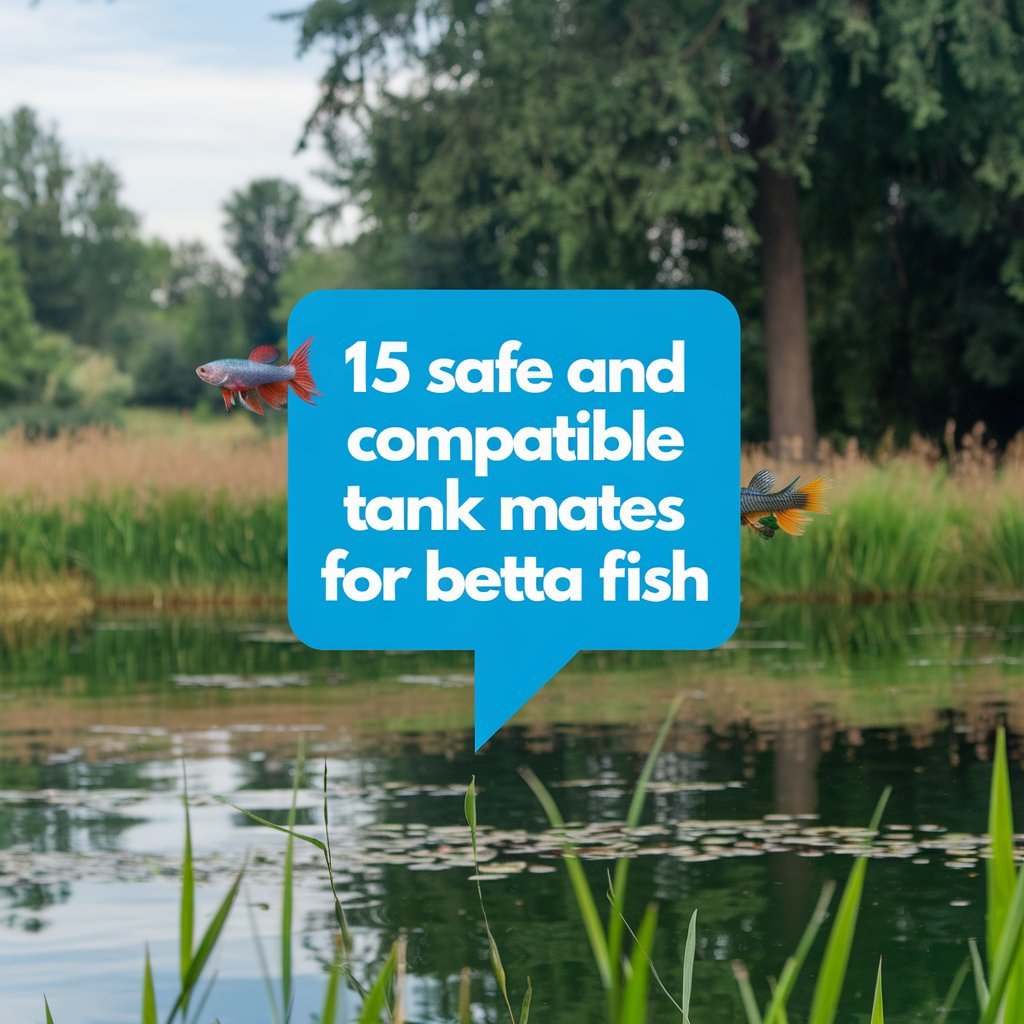
- Schooling fish like Neon Tetras, Harlequin Rasboras, and Lemon Tetras are compatible with Betta fish, provided they’re kept in groups.
- Peaceful bottom-dwellers like Corydoras Catfish and Pygmy Corydoras Catfish can coexist with Betta fish without competition.
- Some Gouramis, such as Dwarf Gouramis, Honey Gouramis, and Spotted Dwarf Gouramis, can be suitable tank mates for Betta fish with proper introduction.
- Active swimmers like Cherry Barbs, Celestial Pearl Danios, and White Cloud Mountain Minnows can be good tank mates for Betta fish.
- When choosing tank mates, ensure compatibility by considering factors like water parameters, swimming levels, and social behavior.
Neon Tetras
Several Neon Tetras can be a suitable tank mate for your Betta fish, but it’s crucial to understand the requirements and potential risks involved.
You should provide a spacious tank, at least 20 gallons, with plenty of plants and hiding places for the Neon Tetras to thrive.
Neon Tetras are schooling fish and should be kept in a group of at least six to ten individuals.
They’re relatively low-maintenance, but their schooling behavior can be disrupted if they’re not kept in a sufficient number.
Neon Tetras are sensitive to water conditions and require a temperature range of 72-82°F (22-28°C) and pH 6.0-7.0.
In their natural habitat, Neon Tetras breed in the summer months when the water temperature rises.
You can replicate this environment in your tank by gradually increasing the temperature.
Neon Tetras have a relatively short lifespan, typically ranging from 3-5 years in captivity.
However, with proper care and conditions, some Neon Tetras have been known to live up to 8 years.
By understanding these requirements, you can create a harmonious environment for your Neon Tetras and Betta fish to coexist.
Confirm you research and understand the needs of both species before introducing them to the same tank.
Harlequin Rasboras
Adding Harlequin Rasboras to your tank can be a great way to create a diverse community that includes your Betta fish.
These peaceful, small fish are easy to care for and can thrive in a well-maintained tank with proper water conditions.
Harlequin Rasboras are schooling fish that prefer to be in groups of at least six to eight individuals.
They exhibit active schooling behavior, which can be fascinating to watch.
In terms of aquatic companionship, Harlequin Rasboras can get along well with Betta fish, especially if introduced slowly and under close observation.
However, it’s vital to make certain your tank is large enough to accommodate both species comfortably.
A minimum tank size of 20 gallons is recommended to provide ample space for your Betta fish and the schooling Harlequin Rasboras.
When keeping Harlequin Rasboras with your Betta fish, maintain a balanced environment with plenty of hiding places and visual barriers.
This will help reduce stress and aggression, creating a harmonious community.
Zebra Danios
If you’ve successfully established a harmonious community with your Betta fish and other peaceful species like Harlequin Rasboras, you may want to ponder introducing Zebra Danios to your tank.
These active, hardy fish are generally compatible with Betta fish, but their energetic nature requires consideration. Zebra Danios are a schooling species, thriving in groups of at least six or more, so you’ll need to guarantee your tank is spacious enough to accommodate them.
In terms of Zebra danio behavior, they’re diurnal, meaning they’re active during the day and rest at night.
They’re also prolific swimmers, darting back and forth across the tank, which can be entertaining to watch.
For ideal Zebra danio care, maintain a temperature range of 65-77°F (18-25°C) and pH levels between 6.5-8.5.
They’re omnivores, so provide a balanced diet that includes a mix of plant and animal matter.
With proper care and tank conditions, Zebra Danios can make a great addition to your community tank, offering a dynamic and engaging element to the aquarium.
However, their activity level may not be suitable for all tank mates, so research and planning are essential before introducing them to your tank.
Cherry Barbs
Incorporating a school of Cherry Barbs into your Betta tank can create a striking visual contrast and a fascinating display of social interaction.
As a peaceful, schooling fish, Cherry Barbs thrive in groups of six or more, making them an excellent choice for community tanks.
When kept in schools, they exhibit natural Cherry Barb Behavior, such as swimming together and foraging for food as a group.
To keep your Cherry Barbs healthy and happy, you’ll need to provide them with a balanced diet that includes a mix of plant and animal matter.
Cherry Barb Diet consists of small insects, plankton, and algae, which can be replicated in the aquarium using high-quality commercial flake or pellet food.
Supplementing their diet with live or frozen foods, such as brine shrimp or bloodworms, can also help to promote their natural foraging behavior.
When introducing Cherry Barbs to your Betta tank, make sure to provide plenty of hiding places and visual barriers to help reduce stress and aggression.
With proper care and attention, Cherry Barbs can make a wonderful addition to your Betta tank, adding a splash of color and energy to the aquarium.
Corydoras Catfish
You’re considering a unique and useful addition to your Betta tank – the Corydoras Catfish. These small, armored catfish are a great choice for community tanks, as they’re easy to care for and help keep the tank clean.
Corydoras Catfish are excellent foragers, using their whisker-like barbels to search for food particles on the substrate. They’re most active at night, but you’ll often see them darting around during the day, especially when food is involved.
Corydoras Catfish are schooling fish and do well in groups of 6-10 or more. They’re relatively peaceful and can be kept with a variety of tank mates, including Betta fish.
When it comes to breeding, Corydoras Catfish are egg-layers and typically spawn in the early morning hours. The eggs will hatch in a few days, and the fry will be free-swimming shortly after.
Corydoras breeding can be challenging, but with proper water conditions and care, you can successfully breed these catfish in your home aquarium. By understanding Corydoras habits and providing the right environment, you can enjoy the benefits of these fascinating fish in your Betta tank.
Celestial Pearl Danios
Your Betta tank’s unique community is taking shape, and now it’s time to ponder adding a fast-paced, active schooling fish – the Celestial Pearl Danio.
This species is an excellent choice for a community tank, as they’re easy to care for and can thrive in a well-maintained environment.
When it comes to Danio socialization, crucially, you must keep them in schools of at least six to eight individuals. This will help to distribute aggression and create a sense of security among the group.
Celestial Pearl Danios are known for their striking Celestial colors, which include iridescent blue and pink hues.
They’re relatively small, reaching a length of about 1-2 inches, making them a great choice for smaller tanks.
Regarding compatibility with Betta fish, Celestial Pearl Danios are a good match, as they’re active swimmers that tend to occupy the middle and upper levels of the tank.
This reduces the likelihood of conflicts with your Betta, which typically occupies the lower levels.
With proper care and attention, Celestial Pearl Danios can be a beautiful and engaging addition to your Betta tank.
Lemon Tetras
A suitable companion for Betta fish, Lemon Tetras can bring a splash of vibrant color and energy to a community tank.
When considering Lemon Tetras as tank mates, you should keep in mind their social nature. Lemon tetra socialization is key to their well-being, as they thrive in schools.
In the wild, Lemon Tetras are known to form large schools, which provide them with protection and a sense of security.
To replicate this in your tank, you’ll want to keep a group of at least six to ten Lemon Tetras. This will allow them to engage in their natural Lemon tetra schooling behavior.
By doing so, you’ll create a dynamic and engaging environment that promotes their overall health and happiness.
Lemon Tetras are relatively small, reaching a length of about 1.5-2 inches, making them a great choice for smaller community tanks.
They’re also relatively low maintenance and can tolerate a range of water conditions.
However, they do prefer soft, slightly acidic water with plenty of hiding places and plants to swim through.
Dwarf Gouramis
When considering tank mates for Betta fish, it’s worth exploring other species that can complement their unique personalities.
Dwarf gouramis are one such option, but you’ll need to carefully assess their compatibility. With regard to dwarf gourami behavior, they can be territorial and may not tolerate fin-nipping or harassment from your Betta.
However, some dwarf gouramis are more docile and can coexist peacefully.
To guarantee harmony, provide a spacious tank with plenty of hiding places and visual barriers. A minimum tank size of 20 gallons is recommended.
You’ll also need to replicate the natural environment of dwarf gouramis, which includes warm water (72-82°F) and a pH range of 6.8-8.5.
Dwarf gourami care is relatively straightforward, requiring a balanced diet and regular water changes.
When introducing a dwarf gourami to your Betta’s tank, do it slowly and under close observation.
Monitor their behavior, and be prepared to separate them if you notice any aggression.
With proper care and attention, a peaceful coexistence between your Betta and dwarf gourami can be achieved, creating a thriving and diverse aquarium community.
Honey Gouramis
Honey Gouramis (Colisa chuna) are a popular and peaceful species of freshwater fish that are native to the slow-moving waters of India and Bangladesh. They are known for their striking honey-gold coloration, which gives them their common name, and their peaceful, docile nature.
Honey Gouramis are a relatively small species, reaching a maximum length of about 2-3 inches, making them a great addition to small community aquariums. They are also relatively low-maintenance, tolerating a range of water conditions and temperatures.
One of the most interesting features of Honey Gouramis is their unique mating behavior, in which the male builds a bubble nest and performs a complex courtship dance to attract a female.
They are also prolific breeders, making them a popular choice for breeders and enthusiasts. Overall, Honey Gouramis are a great choice for anyone looking to add a touch of elegance and tranquility to their aquarium.
White Cloud Mountain Minnows
You’re likely considering White Cloud Mountain Minnows as a potential tank mate for your Betta fish due to their peaceful nature and active swimming behavior.
They’re an excellent choice for a community tank, as they exhibit a schooling behavior that can add visual interest and movement. These minnows thrive in temperatures between 72°F to 82°F (22°C to 28°C), making them a compatible choice for a Betta’s environment.
They prefer well-oxygenated, flowing water, so you may need to adjust your tank’s setup to accommodate their needs.
White Cloud Mountain Minnows are a hardy and adaptable species that can tolerate slight fluctuations in water parameters.
They’re easy to feed, as they’ll readily accept a variety of commercial flake and pellet foods.
With regard to compatibility with your Betta, these minnows are generally a good choice. However, verify you have a large enough tank to provide them with adequate space to school and exercise.
A minimum tank size of 10 gallons is recommended.
Pygmy Corydoras Catfish
Pygmy Corydoras Catfish, with their small size and peaceful demeanor, make an attractive choice for a community tank with a Betta fish.
These small catfish, typically reaching 1-2 inches in length, are naturally schooling fish and should be kept in a group of at least six individuals.
This will help to promote their natural behavior and provide you with an entertaining display of movement at the tank’s bottom.
As tank bottom dwellers, Pygmy Corydoras Catfish are well-suited for community tanks with plenty of open swimming space for the Betta.
Their small size also means they won’t compete with the Betta for food or attention.
However, you’ll need to guarantee your tank has plenty of hiding places and visual barriers to help your Pygmy Corydoras Catfish feel secure.
When selecting tank mates, compatibility is vital.
Pygmy Corydoras Catfish are easy-going and won’t harass the Betta or other tank mates.
In return, they should be paired with peaceful fish that won’t bully or intimidate them.
Spotted Dwarf Gouramis
Spotted Dwarf Gouramis can be a suitable choice for a community tank with a Betta fish, given their relatively small size and peaceful nature.
These fish are native to slow-moving waters and thrive in environments with plenty of hiding places and vegetation. When choosing Spotted Dwarf Gouramis as tank mates for your Betta, consider their Gourami socialization requirements.
They prefer to live in pairs or small groups and can be territorial towards other Gouramis.
To guarantee a harmonious coexistence, provide a spacious tank with a minimum capacity of 20 gallons.
A well-planted aquarium with open swimming areas and hiding places will meet the Gourami habitat requirements. You should also maintain a temperature range of 72-82°F (22-28°C) and a pH of 6.5-8.5.
Avoid housing Spotted Dwarf Gouramis with fin-nipping fish or those that are too boisterous, as they can be stressed by aggressive behavior.
By understanding their social and habitat needs, you can create a peaceful community tank where your Betta and Spotted Dwarf Gouramis can thrive together.
Regular water changes and a balanced diet will also contribute to their overall health and well-being.
Green Tiger Barbs
Housed in a well-maintained aquarium, Green Tiger Barbs can make suitable tank mates for a Betta fish, given their active, schooling nature and relatively small size.
They thrive in groups, so it’s vital to keep them in schools of at least 6-10 individuals to minimize aggressive behavior. This schooling pattern helps distribute their energy and reduces the likelihood of nipping at your Betta’s fins.
When introducing Green Tiger Barbs to your tank, verify the aquarium is spacious enough to accommodate their active swimming.
A minimum tank size of 20 gallons is recommended, with plenty of hiding places and plants to provide shelter. Avoid overstocking, as this can lead to stress and aggression. You’ll also want to maintain ideal water parameters, with temperatures between 72°F-82°F and pH levels between 6.5-7.5.
Pygmy Hatchetfish
Active and schooling by nature, a species similar to Green Tiger Barbs, that shares compatible characteristics, making suitable tank mates for your Betta, are surface-swimming Pygmy Hatchetfish.
These small fish are extremely active and thrive in a small school, which makes them an excellent choice for community aquariums. They spend most of their time at the peaceful surface, allowing your Betta to claim the mid and lower levels as its territory.
When keeping Pygmy Hatchetfish, it is vital to maintain a harmonious environment.
A 10-gallon tank with plenty of plants and open swimming space is perfect for a small school of 6-10 Pygmy Hatchetfish. They’re relatively hardy and can tolerate a wide range of water conditions, but it is imperative to maintain stable water parameters to prevent stress.
Pygmy Hatchetfish aren’t fin-nippers and tend to leave your Betta’s fins alone. However, it is vital to verify your Betta isn’t fin-nipping your Pygmy Hatchetfish.
A peaceful and calm environment will encourage both species to thrive together. With proper care and attention, Pygmy Hatchetfish can make excellent tank mates for your Betta.
Threadfin Acara
Threadfin Acara, a peaceful and relatively small cichlid species, can make suitable tank mates for your Betta if you’re willing to provide a spacious environment.
To keep them thriving, you’ll need a tank with a minimum capacity of 55 gallons, as they require ample space to swim and forage for food.
When it comes to Threadfin care, it’s crucial to replicate their natural Acara habitat, which features open waters, sandy substrates, and scattered vegetation.
A well-planted tank with plenty of hiding spots will help your Threadfin Acara feel secure.
Water parameters should be maintained within their preferred range, with temperatures between 72-82°F (22-28°C) and pH levels between 6.0-8.0.
As a mid-water dweller, they’ll appreciate a moderate water flow, while your Betta can occupy the surface and lower levels of the tank.
With proper Threadfin care and attention to their Acara habitat needs, you can create a harmonious environment where both species can coexist peacefully.
Frequently Asked Questions
What Is the Ideal Tank Size for Multiple Tank Mates?
You’ll want a minimum capacity of 20 gallons for multiple tank mates, considering tank dimensions and swim levels to provide ample space for your aquatic community to thrive and coexist peacefully with proper filtration and maintenance.
Can I Keep Male and Female Betta Together Peacefully?
You’re considering keeping male and female betta together. However, this setup isn’t recommended as it can lead to Betta Courtship and eventual aggression, especially Fin Nipping, after the spawning process is complete.
How Often Should I Feed My Betta and Tank Mates?
You’re managing a tank’s feeding schedule, so establish a consistent meal frequency. Feed your betta and tank mates 2-3 small meals daily, only as much as they can consume within 1-2 minutes.
Are Betta Fish Compatible With Snails and Shrimp?
When introducing snails or shrimp to your tank, you’re creating a harmonious environment if you choose species with compatible traits. Verify your betta won’t see snail shells or shrimp claws as food or threats.
How Quickly Can I Introduce New Tank Mates to Betta Fish?
When introducing new tank mates, you’ll want to prioritize their safety and yours. Practice slow acclimation and gradual introduction to avoid stressing your betta fish. Start by keeping them separated, then slowly integrate them under close observation.
FInal Verdict
When choosing tank mates for your Betta fish, remember to select species that thrive in similar water conditions and promote peaceful coexistence. By introducing compatible fish like schooling species or peaceful bottom-dwellers, you’ll create a harmonious environment that minimizes stress on your Betta.
This list of 15 safe and compatible tank mates offers a variety of options to add visual interest and social interaction to your tank while ensuring the well-being of your Betta fish.
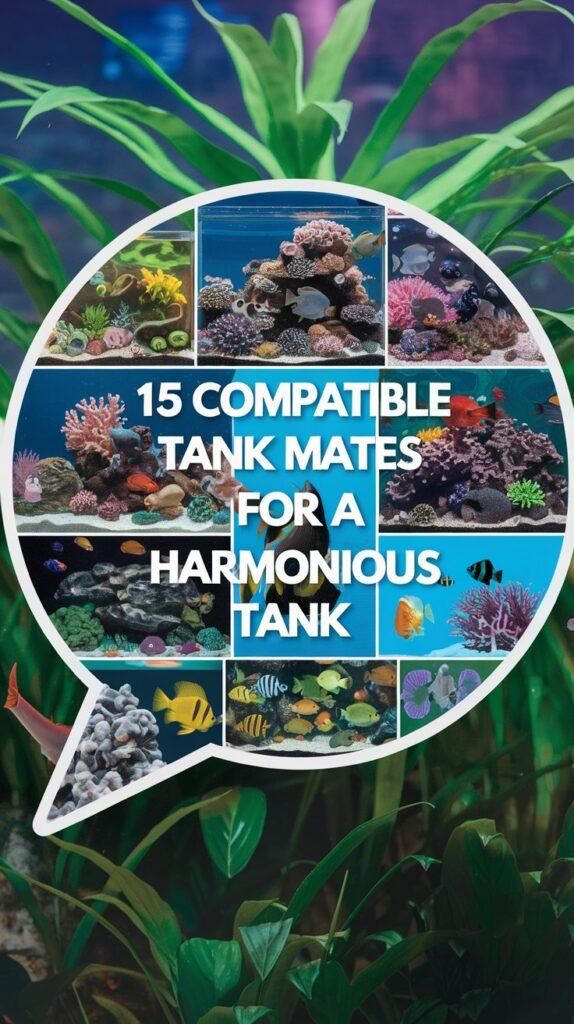
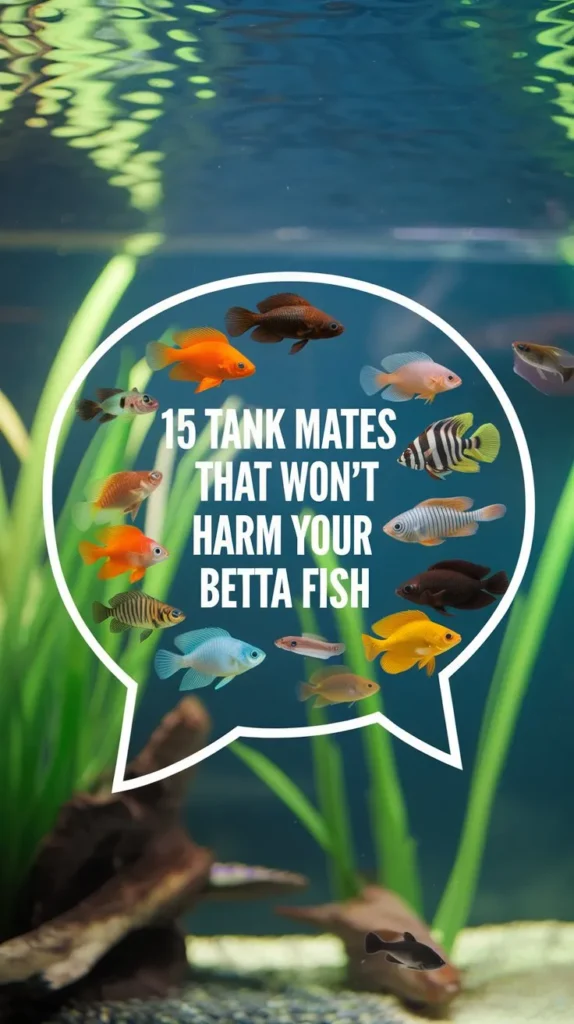
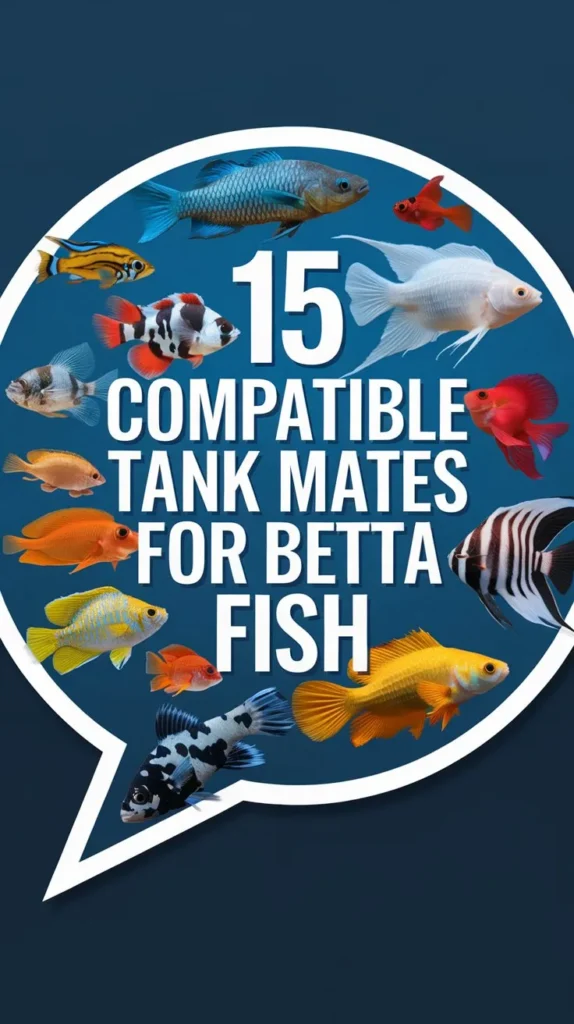
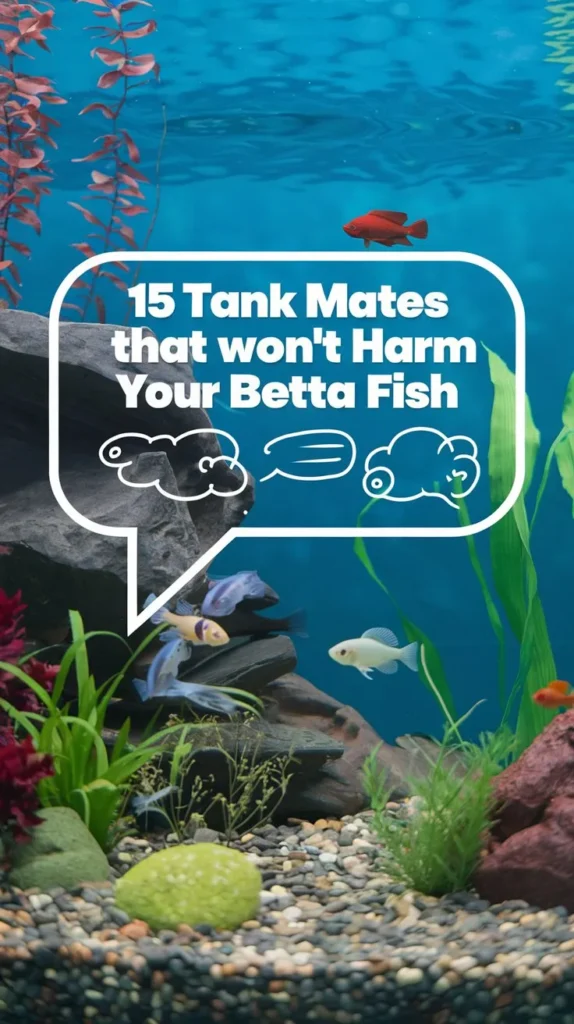

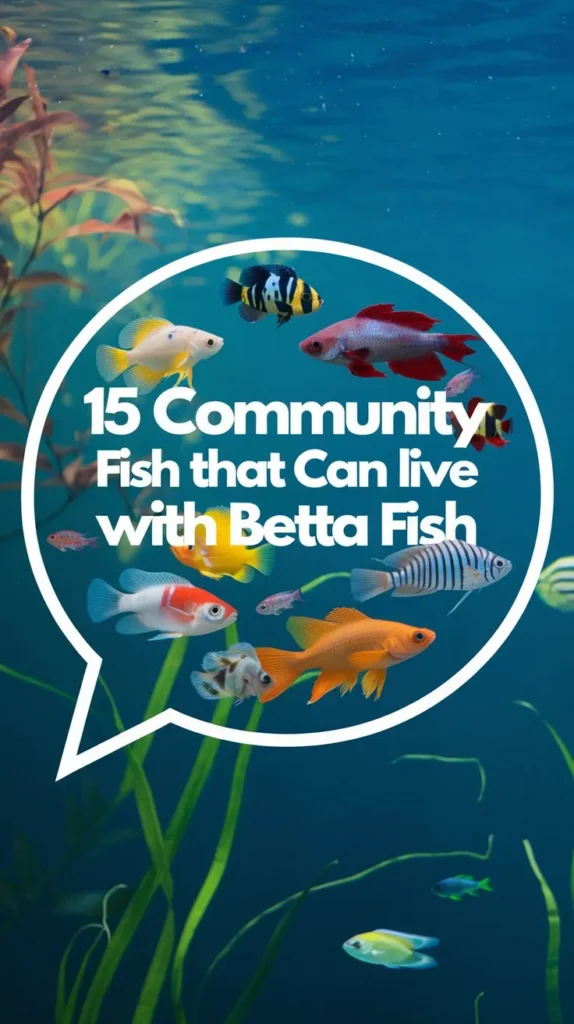
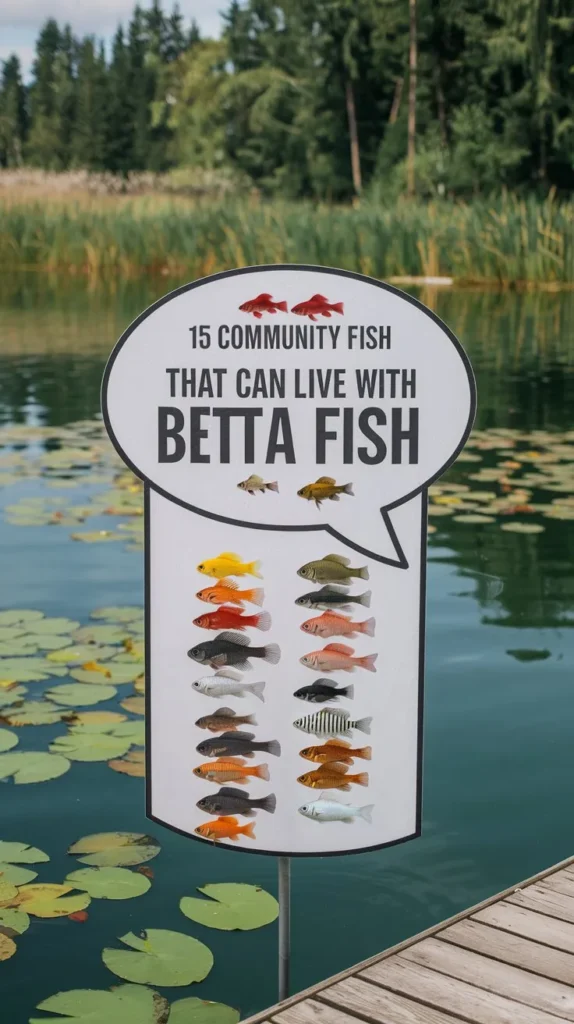
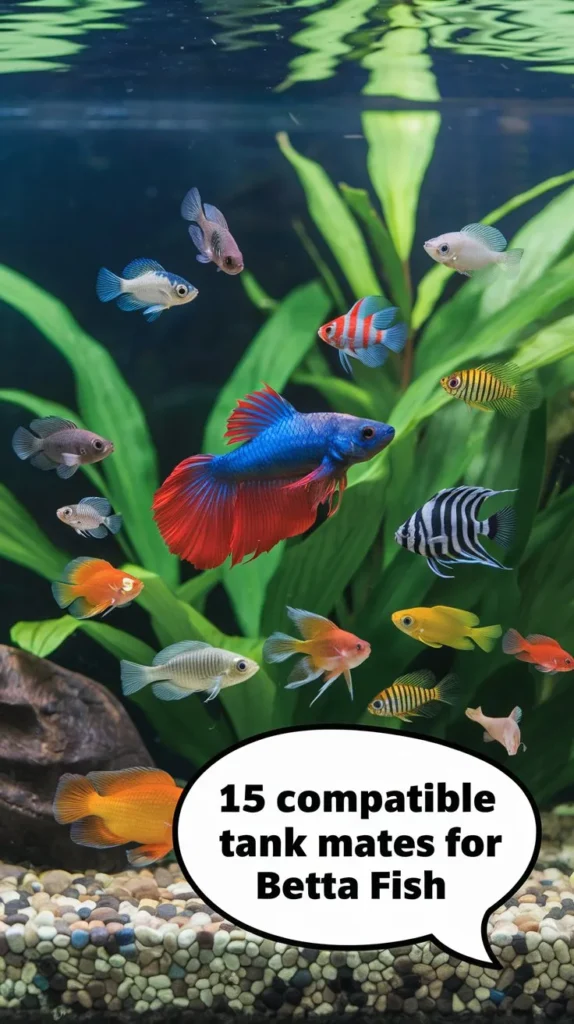
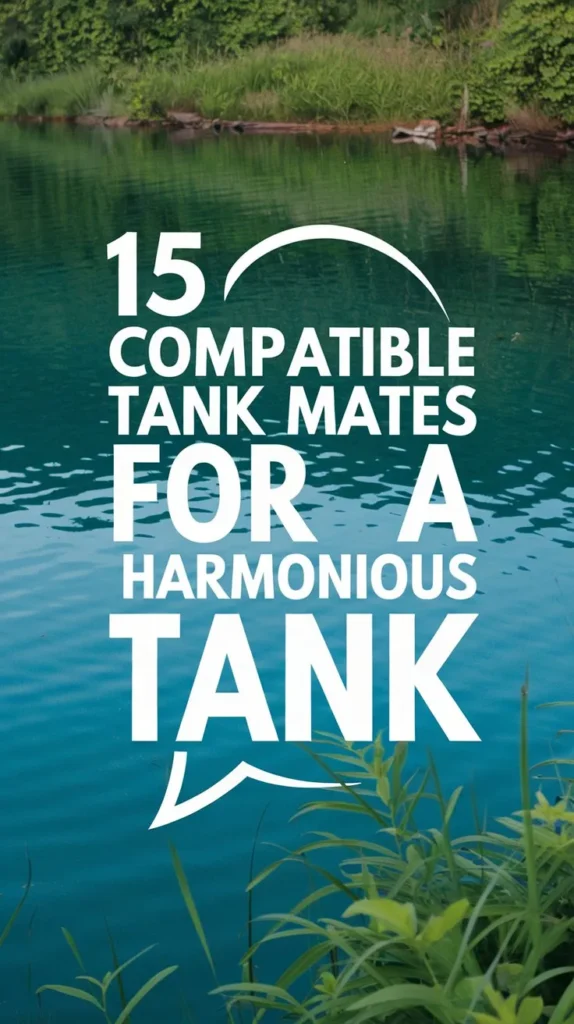

Hello, I’m Aria Cooper, the heart and soul behind Swimmy Buddies. As a devoted fish aficionado, I share my aquatic adventures and expertise to inspire your own underwater explorations. 🐠🌊

